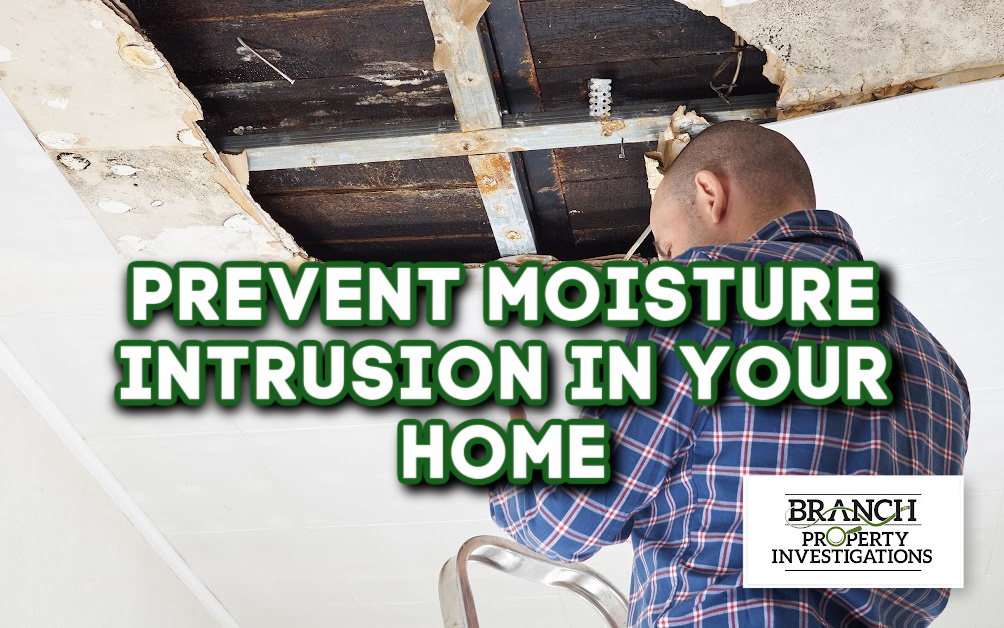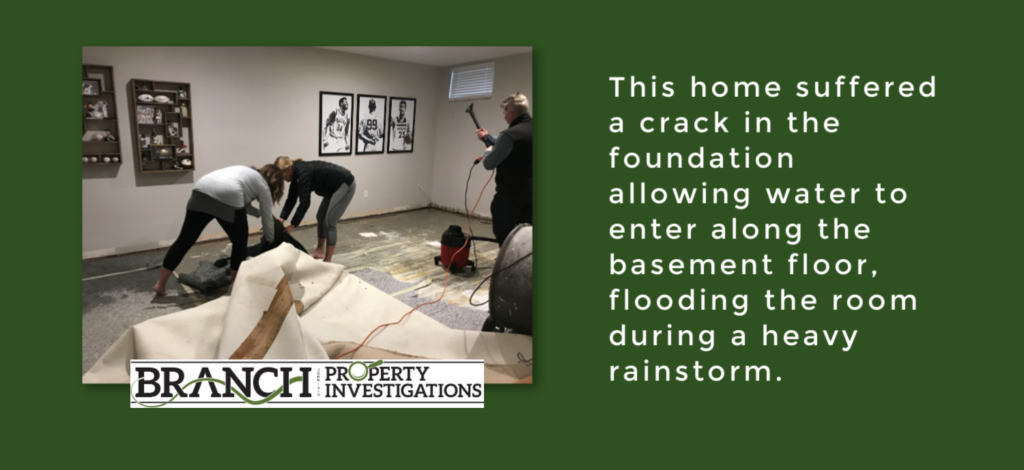Winter in Minnesota has been a bit lackluster this year in terms of snowfall but moisture intrusion can still be an issue for homeowners. We’ve heard from people with frost in their attics, frozen or burst pipes, and those who’ve noticed new mysterious stains on their ceilings. We even showed up to one unoccupied property for a regular home inspection, only to find that an upstairs bathroom sink had been left running for a day or two. Water filled the sink, overflowed onto the vanity and floor, and then soaked through the ceiling below causing significant damage.
Thankfully not every situation is this dire, but moisture intrusion is always a hassle! Today we will point out the most common sources of moisture intrusion and share some steps you can take to prevent moisture intrusion in your own home.
Common Sources of Moisture Intrusion
- Roof leaks
- Plumbing leaks
- Improperly sealed windows and doors
- Cracks in the foundation
- Poor ventilation
Tips for Preventing Moisture Intrusion
Roof Maintenance:
- Clear snow accumulation from the roof to prevent ice dams, which can lead to roof leaks.
- Check for ice buildup in gutters and downspouts and ensure they remain clear to prevent water from backing up and causing damage.
- Regularly inspect the roof for damaged or missing shingles.
Plumbing Maintenance:
- Pay extra attention to exposed pipes in unheated areas of the home, such as basements, attics, and crawl spaces, to prevent freezing and potential bursts.
- Winterize your exterior faucets.
- Insulate pipes to help prevent freezing.
- Check for leaks under sinks, around toilets, and in the basement.
- Replace old or damaged plumbing fixtures.
Seal Windows and Doors:
- Check for drafts around windows and doors and reseal as needed to prevent cold air from entering and condensation from forming indoors.
- Use weather stripping and caulking to seal gaps.
- Consider upgrading to energy-efficient windows and doors.
Foundation Maintenance:
- Inspect the foundation for cracks and gaps that could allow moisture to seep in, paying attention to areas where snow and ice may accumulate and melt.
- Fill cracks in the foundation with sealant.
- Ensure proper grading around the foundation to direct water away from the house.
Ventilation:
- Ensure proper ventilation in attics and crawl spaces to prevent condensation buildup, which can lead to mold and mildew growth.
- Use bathroom and kitchen exhaust fans regularly to remove excess moisture generated by cooking and showering.
- Use a dehumidifier in damp areas of the home, such as basements.
Monitor Indoor Humidity:
- During the winter, indoor humidity levels can drop due to heating systems. Use a humidifier to prevent overly dry conditions that can lead to static electricity and discomfort.
- Adjust indoor humidity lower as the exterior temperature falls.
- Use a hygrometer to measure and monitor humidity levels.




